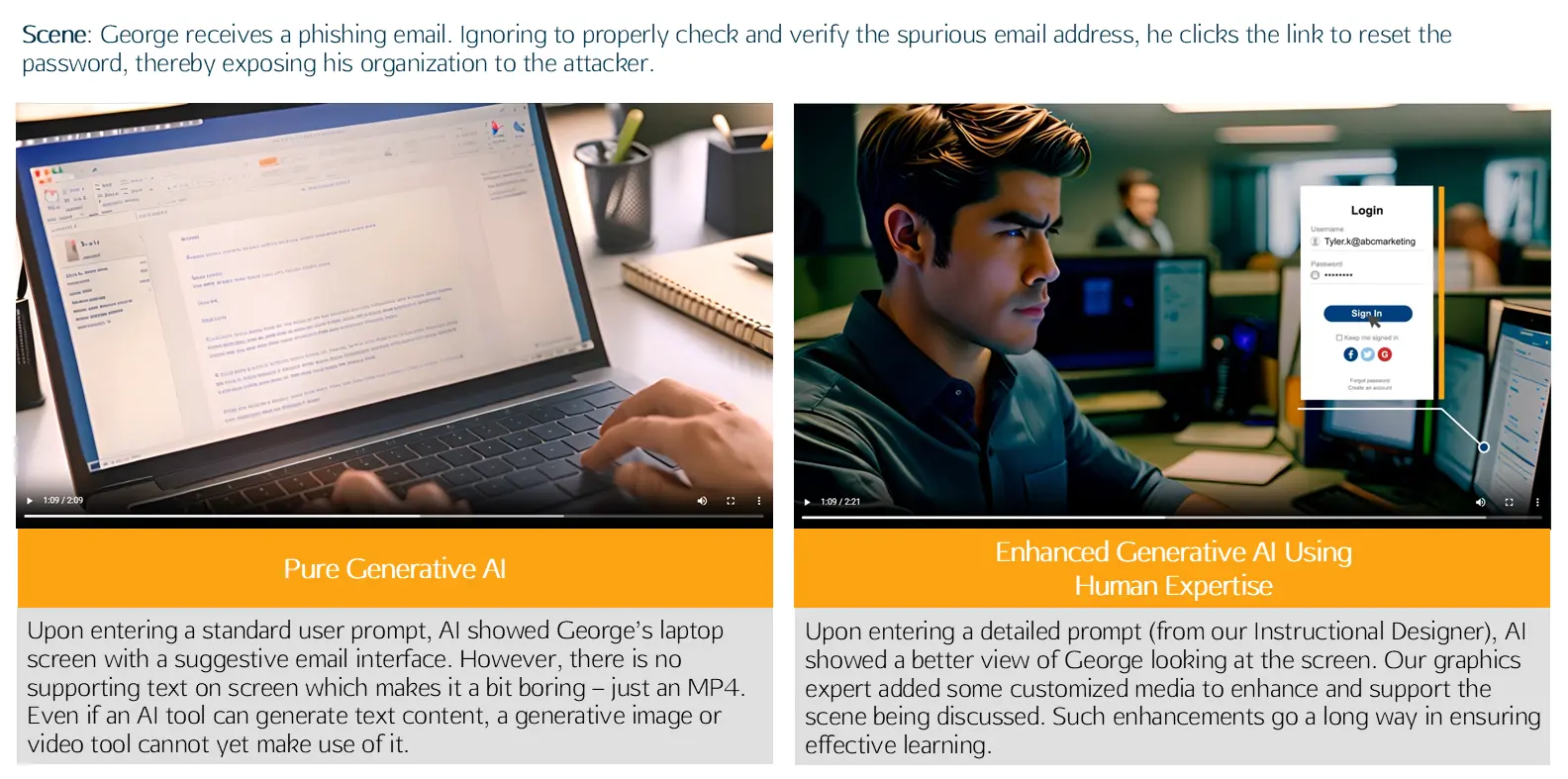Leveraging Artificial Intelligence for Improved Learning Experiences
Artificial intelligence (AI) is rapidly transforming industries, and the field of training is no exception. With its ability to analyze vast amounts of data, identify patterns, and make predictions, AI offers innovative ways to make learning more engaging, efficient, and personalized. By embracing AI, organizations can revolutionize their training programs, making them smarter, more interactive, and tailored to individual needs.
This blog explores how AI can elevate your training initiatives, outlines the various AI tools available, and discusses potential challenges to consider.
Benefits of AI in Training
AI is changing the training landscape by offering a range of compelling advantages:
-
Personalized Learning Experiences:
- Tailored Content: AI can analyze learner requirements and deliver content that aligns perfectly with their individual needs.
- Adaptive Learning Paths: AI can track learner progress and adjust learning pathways dynamically to maximize effectiveness.
-
Enhanced Learning Efficiency:
- Intelligent Assessments: AI can accurately evaluate learner knowledge and identify areas requiring additional support.
- Automated Administrative Tasks: Grading, enrollment, and other routine tasks can be handled by AI, freeing up valuable time for more strategic functions.
-
Improved Learner Engagement:
- Interactive Content: AI can make learning more engaging by incorporating games, simulations, and even virtual reality experiences.
- Real-Time Feedback: AI tools provide immediate feedback, keeping learners motivated and focused on their goals.
-
Data-Driven Insights:
- Performance Analytics: AI can analyze learner data to identify trends and areas for improvement.
- Predictive Analytics: By predicting learner behavior, AI can help you proactively address potential challenges.
AI Tools for Training
The AI landscape is evolving rapidly and it now offers a diverse set of tools to enhance your training programs at every step of development like:
-
Content Creation Tools:
- AI-Powered Authoring Tools: These tools can generate text, images, audio, and even videos based on your specific prompts.
Examples: Jasper.ai, Copy.ai, Midjourney, Canva, Runway ML, DeepDub, etc.
- AI-Powered Authoring Tools: These tools can generate text, images, audio, and even videos based on your specific prompts.
-
Learning Experience Platforms (LEPs):
- Adaptive Learning Platforms & Intelligent Tutoring Systems (ITS): These platforms leverage AI to provide personalized instruction and feedback.
Examples: Duolingo, Khan Academy, OpenCog, Tutoring Systems Architecture (TSA), and Open Educational Resources (OER), etc. - Chatbots and Virtual Assistants: These tools can offer instant support, answer questions, and guide learners through training programs.
Examples: Intercom, Replika, etc.
- Adaptive Learning Platforms & Intelligent Tutoring Systems (ITS): These platforms leverage AI to provide personalized instruction and feedback.
-
Analytics and Insights Tools:
- Learning Analytics Platforms: These platforms track and analyze learner behavior to identify trends and patterns.
Examples: Coursera Analytics Dashboard, EdX Analytics - Predictive Analytics Tools: These tools forecast learner performance and suggest personalized adjustments.
Examples: IBM Watson Analytics, Google Cloud Prediction API, etc.
- Learning Analytics Platforms: These platforms track and analyze learner behavior to identify trends and patterns.
Potential Challenges of AI in Training
While AI offers significant benefits, there are also some potential drawbacks one should consider.
-
Limited Human Judgment and Creativity:
- Context Matters: AI may struggle to understand the nuances of human language and culture, potentially leading to inaccurate or irrelevant content.
- Uninspiring Content: AI-generated content can sometimes lack the human touch and may not be as engaging for learners looking for specific workplace or job-related solutions.
- Organization-Specific Content: Content and tone may not be specific to an organization’s specific needs and vision. Generic compliance training – sure! But content that reflects a company’s brand and values, processes or systems will be hard to procure using AI.
-
Data Quality and Bias:
- Data Accuracy: If the data used to train your AI is flawed or biased, the output will be as well. Otherwise expect generic content that’s freely available on the web.
- Privacy Concerns: Data collection and storage require careful consideration to ensure learner privacy is protected.
-
Technical Challenges:
- Implementation Complexity: Setting up AI systems can be complex and may require specialized knowledge. Especially because of how new these tools are.
- Cost Considerations: AI tools and platforms can be expensive, potentially posing a hurdle for some organizations.
The Human and AI Partnership
AI is a powerful tool, but it’s important to remember that it’s just that – a tool. Human expertise remains crucial in several key areas.
-
Compelling Narratives: Storytelling is a critical element in learning, and humans excel at creating engaging narratives that resonate with learners.
-
Effective Learning Design: Instructional designers possess the expertise to structure content in a way that optimizes learning outcomes and meets your training and business goals. It’s all about personalized learning experiences!
-
Actionable Prompts: While AI can generate prompts, it may lack the understanding of context, goals, and learner needs that humans possess.
-
Quality Assurance: AI isn’t foolproof – human oversight is essential to identify errors and ensure content accuracy.
-
Tailored Content: Understanding learner backgrounds and specific needs is key, an area where humans excel.
Conclusion
Should you invest in and use AI-based tools and technologies? Absolutely! Such investments can help organizations to reduce their team’s workload and reduce costs. On the other hand, fully relying on AI is ill-advised as it can be detrimental to their training efforts.
To know how you can speed up training creation, and keep the costs low, connect with us and we’ll reach out to you shortly.







